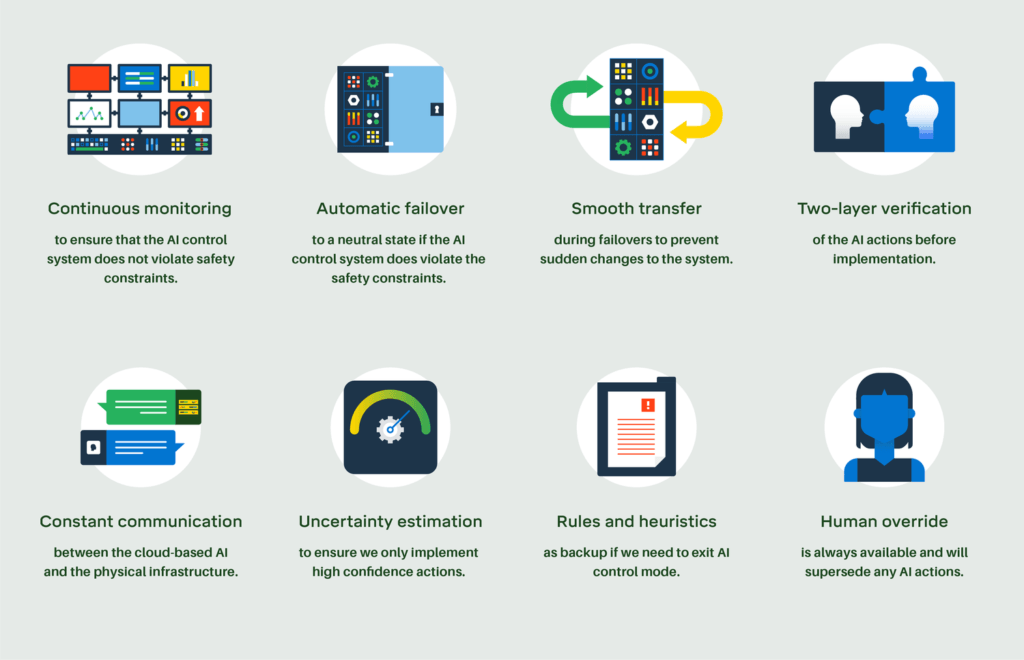
“Google et DeepMind ont convenu de bien délimiter le champ d’action des algorithmes d’optimisation afin d’éviter un incident d’exploitation. « Nos opérateurs sont toujours en contrôle et peuvent choisir de quitter le mode de contrôle de l’IA à tout moment. Dans ces scénarios, le système de contrôle passera du contrôle de l’intelligence artificielle aux règles et heuristiques sur site qui définissent aujourd’hui l’industrie de l’automatisation », précise la société. En suivant ce chemin, il s’avère que Google a réduit sa facture électrique : en moyenne, l’entreprise dit avoir obtenu des économies d’énergie de 30 % alors que le mécanisme n’est déployé que depuis quelques mois”.








